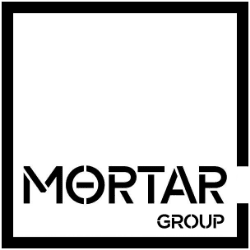
Is there a benefit to sponsors sharing case studies? Case studies usually are a deep(er) dive into a particular fund or investment. Viewing these details can sometimes be essential as a tool to evaluate sponsors. From time to time, we – as well as other sponsors will issue case studies of various completed projects where it helps to paint a picture of the type of work we do, and how we approach investments.
Investors can use it as a tool to cross check with a track record analysis. We find some investors view it as helpful to dig in deeper and understand the nuances of these specific projects for the sponsors versus just looking at a track record alone.
One important note, these should not be just cherry-picked projects that knock it out of the park – but also the deals that underperformed – and they should be recent and relevant to the type of investments being offered. It is as important to know how one project had solid returns versus similar projects that didn’t meet their projections. Understanding those factors can help you get behind the steering wheel of a sponsor’s evaluation of a project and how they executed their exit strategy.
So, what exactly is in a case study?
Description of the Project
This usually covers the project in scope, whether it be multifamily rental, condos, value-add, ground-up, commercial, etc. It will also cover the attraction of this specific project from an investment perspective. It will go over the geographical location and any unique qualities to this project that is helpful from an investor’s point of view. It includes the details of the investment including purchase price, equity investment, costs, term, etc. This gives a good background to the project prior to dissecting the numbers.
Overview / Work Involved
Each case study usually includes the work involved, projected increase in sq footage, rent, condo pricing, etc. It goes into any specifics as to hiccups along the way, permitting issues, work completed, budget etc. This also includes any pictures of the project prior to commencement of work and the finished product. It can also detail the period of work and any specific issues that may have come up from an execution perspective.
Projections vs Reality
A good study will show how the sponsor initially estimated the cost of work, or the valuations of a completed asset. These metrics can be cross–checked with how the investment ended – and you can see how accurate, or how off the original estimates were.
Return Metrics
This is the part most prospective investors care about, or what they fast forward to. How did the sponsor do? What type of returns they achieved and final valuation of the project. This is the part you see in a sponsor’s track record without knowing what was involved in the project that got it to that point.
Mortar Example – 203 Richardson
In the following link, you’ll be able to access a recent case study on one of our projects – 203 Richardson. Some key points of this case study are as follows:
Type of Investment – Williamsburg, Brooklyn Value Add Multifamily – acquired in 2021
Overview/Work Involved – This was initially a 2-family home converted into a 7-unit multifamily building with a mix of 1-, 2-, and 3-bedrooms apartments. This was completed with the addition of two more floors and a rear expansion
Return Metrics – By converting this into a 7-family building, we were able to achieve a net ROI of 136% and Equity Multiple of 2.50x in about 24 months
Behind the Scenes Stories –
One other important note is that in chats with sponsors – the case study can act as a springboard into deeper conversations to understand the investment philosophy. As a sponsor should be able to answer detailed questions about the case study project and be clear and transparent about what went well in the deal, but what went wrong – or what could have been better (almost every deal has a low or difficult phase before a successful exit). They can also share how the offering is doing today – or some interesting challenges they faced!
For example – in our listed case study at 203 Richardson, this deal’s closing was delayed as a result of Covid, and while it took longer to close on acquisition, it allowed us to build during a rough time in the local NY market. Both we – as the sponsor, and our lender were worried about the local market declines and inflation raising construction prices by double digits. However, once we finished the project and got to the market, the delay ended up helping us – as rental numbers were up substantially, and the exit numbers exceeded our projections.

